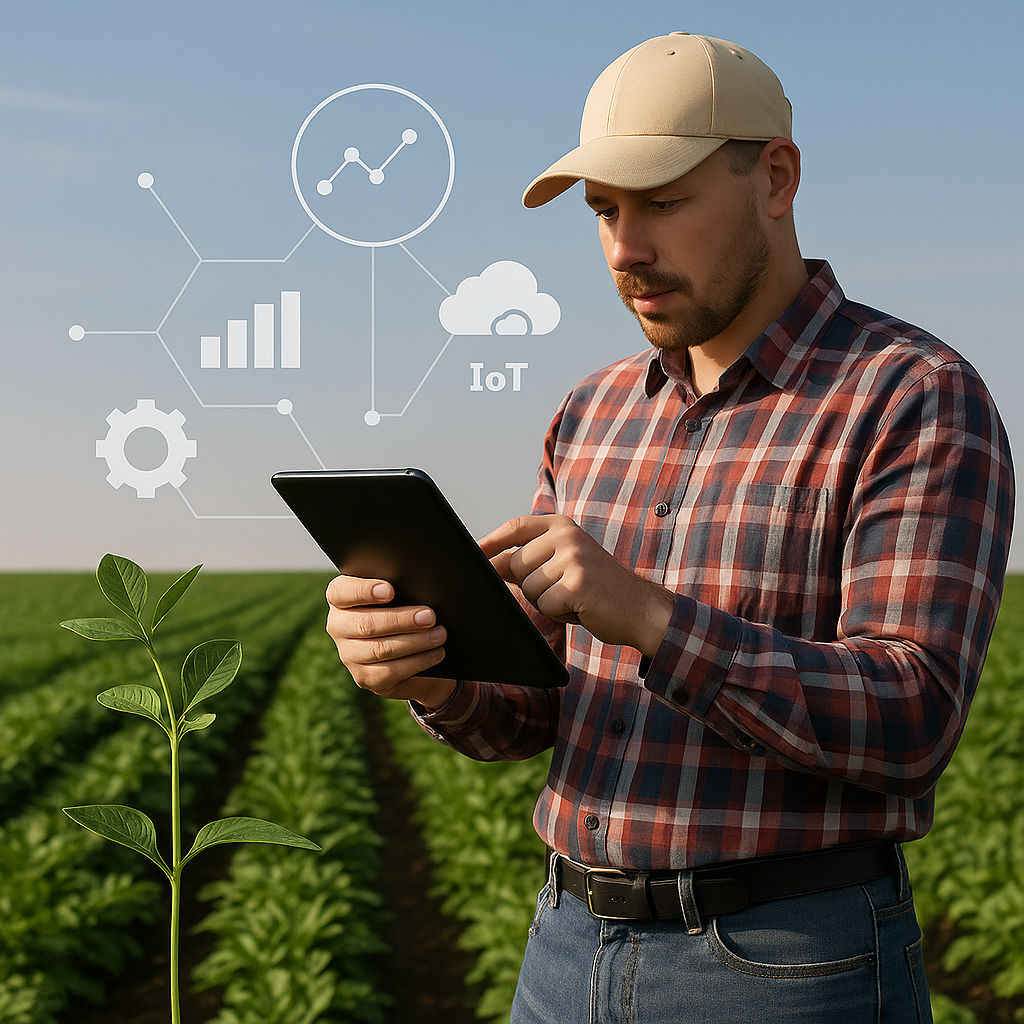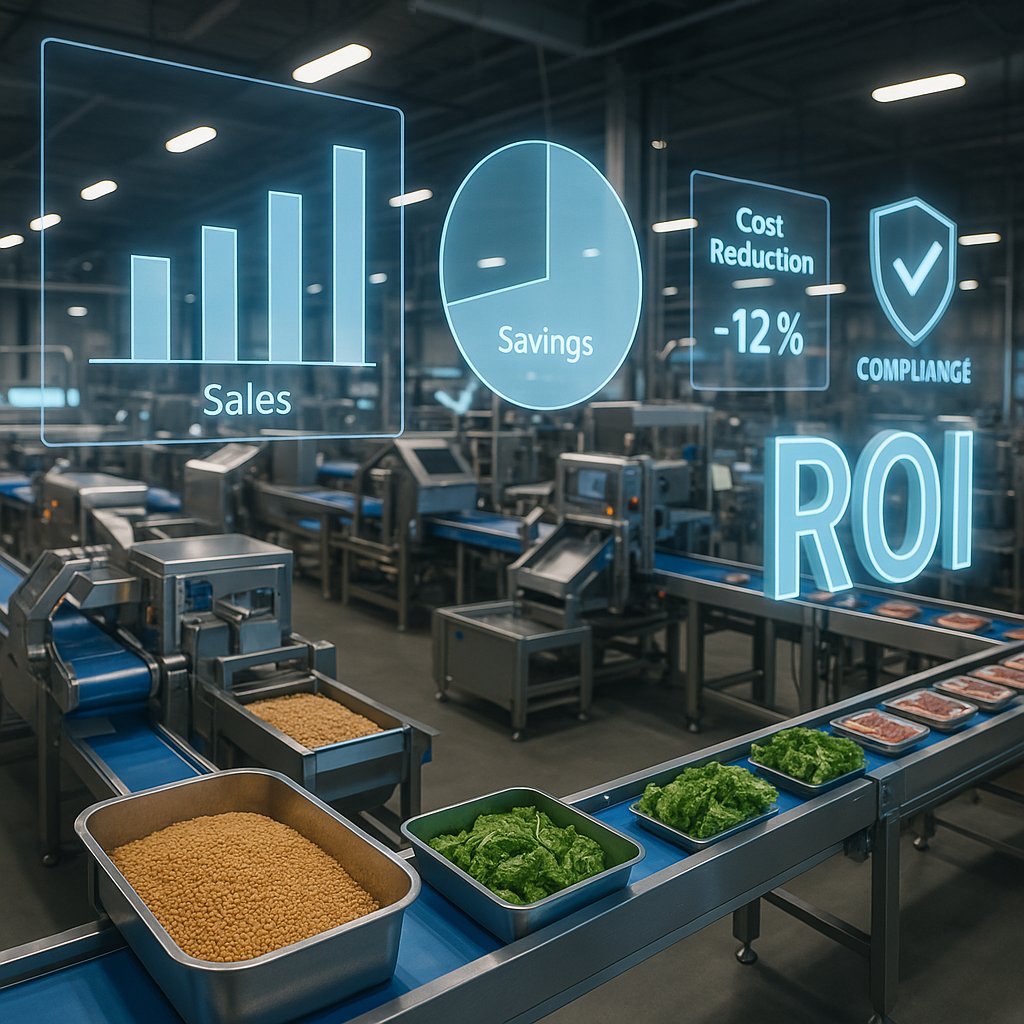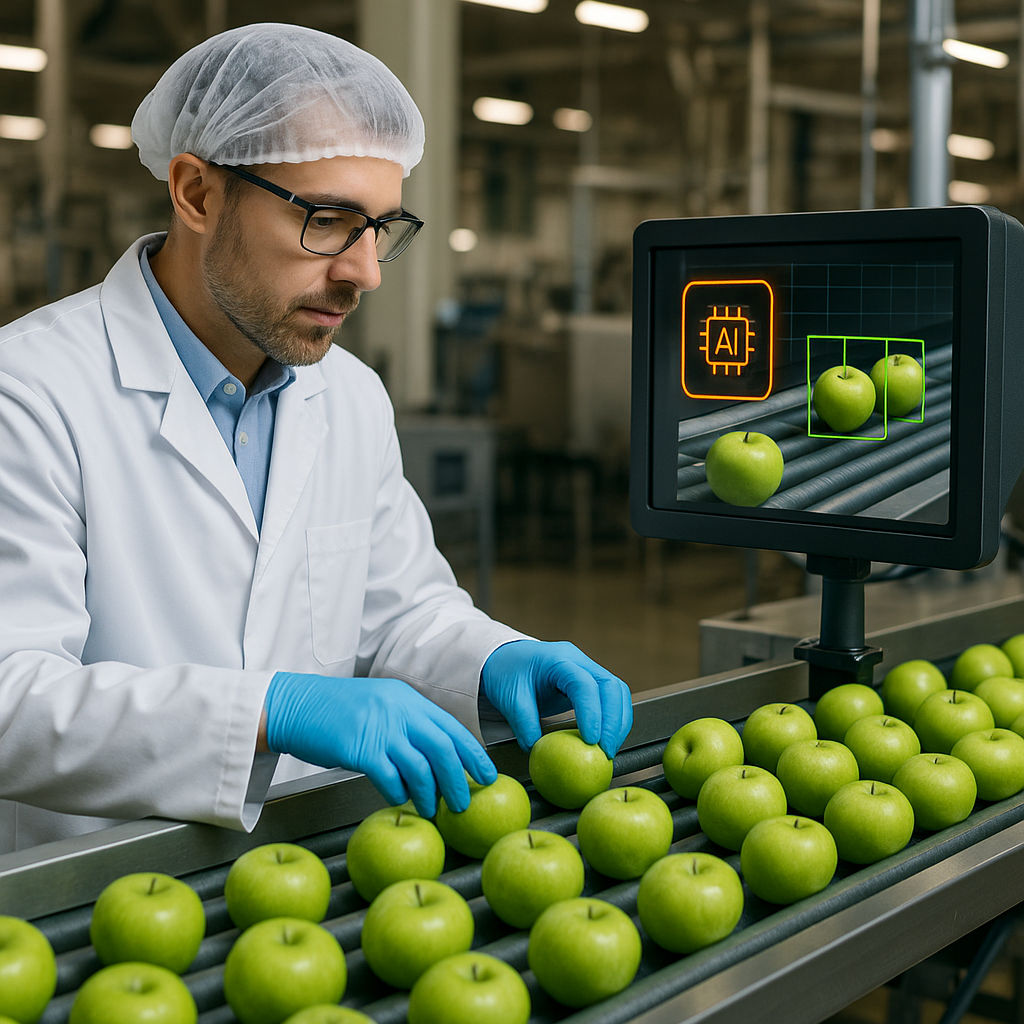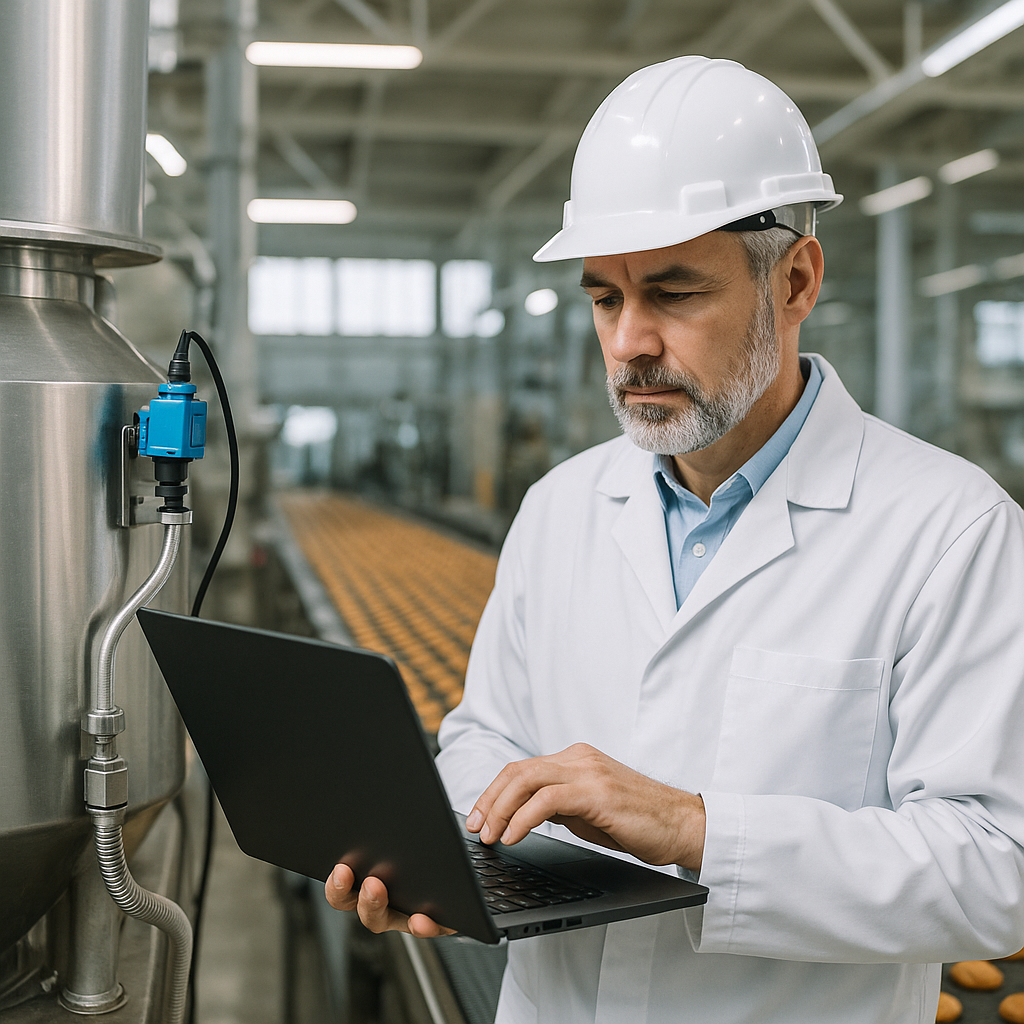Artificial intelligence is rapidly transforming the food industry, creating new opportunities for innovation and operational efficiency. In a sector where production continuity is crucial, integrating AI presents a major challenge that companies must address with precision and method.
According to our latest analyses, 67% of food industry businesses consider AI a strategic priority, yet only 23% have taken the step toward implementation. The main barrier? The fear of costly interruptions in production cycles.
Updata, a specialist in industrial AI solutions, has developed an innovative approach that enables a seamless transition to intelligent automation. Our methodology, built upon over five years of industry experience, ensures smooth, disruption-free integration of AI systems.
The food industry faces unique challenges: tight margins, strict hygiene standards, and a constant demand for increased productivity. AI offers concrete solutions to these issues, optimizing processes while upholding the highest quality standards.
Our vision is clear: to transform the food industry through accessible, easily integrated AI—without compromising daily production. This practical guide will support you at every stage of this essential transformation, from initial assessment to ongoing system optimization.
AI in the Food Industry: Seamless Transformation
The food industry stands on the brink of a transformative technological revolution. Artificial intelligence solutions are redefining production standards, creating unprecedented opportunities for innovation and operational performance. While this evolution holds promise, it also raises legitimate concerns about business continuity.
According to the latest industry analyses, integrating AI into food production processes is quickly becoming a strategic necessity. Companies that have already adopted these technologies are reporting significant improvements in operational efficiency, especially in quality control and resource optimization.
Under the leadership of Maor Zaltzhendler, Updata has developed an innovative approach to introducing AI into the food industry. This unique methodology allows companies to modernize their facilities without interrupting production. “Our vision is to transform the food industry while respecting our clients’ operational constraints,” Zaltzhendler explains.
Updata’s expertise, honed through successful collaborations with major players in the agri-food sector, demonstrates that a harmonious technological transition is not only possible but essential. Our solutions adapt to existing infrastructures, enabling a progressive, controlled modernization of production lines.
This innovative approach addresses the critical challenges facing today’s food industry: process optimization, waste reduction, and continuous quality improvement—all while ensuring uninterrupted production. The future of the food industry is being forged through these carefully managed technological transformations.
Evaluating Integrability
Integrating artificial intelligence into the food industry requires a methodical evaluation of current systems. Our transformative approach focuses on four essential pillars to ensure a smooth transition.
1. Analysis of Current Systems
The evaluation starts with a comprehensive audit of production equipment. Our computer vision technology accurately maps optimal integration points, revealing improvement opportunities without disrupting existing processes.
2. Identification of Priority Segments
Strategic prioritization of intervention areas is based on three criteria:
- Immediate impact on productivity
- Ease of technical integration
- Potential return on investment
3. Technical Evaluation Criteria
Our evaluation process examines:
- Compatibility of electrical systems
- Sensor anchor points
- Quality of network connectivity
- Available space for equipment
4. Installation Prerequisites
To ensure successful integration, installations must have:
- Stable electrical supply
- Secure IT network
- Accessible maintenance areas
- Data backup system
This systematic evaluation enables a tailored integration plan, minimizing risks while maximizing the effectiveness of your AI solution. Our expertise in computer vision ensures a seamless transition to smarter, higher-performing production.
Preparation Strategy
Seamlessly integrating AI into the food industry requires meticulous preparation. Our transformative approach is broken down into distinct phases—guaranteeing a smooth transition to intelligent automation.
Adapting to Existing Infrastructures
Our innovative methodology allows AI systems to be tailored to current equipment without major disruption. A preliminary analysis identifies the optimal integration points, followed by a detailed mapping of necessary modifications. This gradual approach minimizes impact on day-to-day production.
Strategic Installation
Planning The installation schedule is designed to maximize efficiency while respecting production constraints. We prioritize the installation of critical components during planned maintenance periods. Our expertise significantly reduces implementation time, with targeted interventions during less intensive production phases.
Pre-installation Technical Validation
Before any intervention, we conduct a series of rigorous tests:
- System compatibility analysis
- Virtual process simulation
- Assessment of expected performance levels
- Safety protocol verification
Essential Technical Checklist
To ensure optimal preparation, we have developed a comprehensive checklist:
- Network infrastructure assessment
- Verification of processing capabilities
- Data storage needs analysis
- Backup systems configuration
- Cybersecurity protocol setup
This structured approach ensures a controlled digital transformation, enabling food enterprises to embrace innovation while maintaining operational excellence.
Installation and Commissioning
Integrating AI solutions into your production line follows a rigorous protocol designed to minimize disruptions. Our transformative approach guarantees a smooth transition in just 48 hours.
The initial installation phase takes place during off-peak hours, with our experts deploying computer vision systems and configuring AI algorithms. This crucial step lays the foundations for your digital transformation without affecting ongoing production.
Quality control is carried out in parallel with standard operations. Our systems analyze production data in real time, allowing operators to maintain their usual procedures. This dual approach ensures a gradual, safe transition.
System calibration happens dynamically, in real time during production. Our innovative technology automatically adapts to process variations—creating a continuously learning system that improves over time.
Key performance indicators are monitored through our intuitive dashboard:
- Detection accuracy
- Processing time
- Compliance rate
- Operational efficiency
This constant monitoring enables immediate, precise adjustments, ensuring ongoing optimization of your system. Our expert team is available 24/7 to guarantee a smooth transition to operational excellence.
Team Training
Seamless AI integration requires a structured approach to team training. Our transformative program ensures a smooth transition to new technologies while maintaining operational excellence.
Personalized Support Program
Our guidance methodology adapts to the specific needs of each team. Operators benefit from hands-on training at their workstations, combining theory and direct application. This innovative approach enables rapid mastery of new tools without production disruption.
Continuous, Evolving Training
The training program is structured into strategic phases:
- Phase 1: Introduction to AI fundamentals
- Phase 2: Interface and control management
- Phase 3: Advanced parameter management and optimization
- Phase 4: Autonomous resolution of complex situations
Performance Monitoring and Optimization
Our intelligent tracking system enables:
- Real-time analysis of user interactions
- Proactive identification of training needs
- Dynamic adjustment of usage protocols
- Continuous validation of acquired skills
Proactive Technical Support
An expert team remains available 24/7 to:
- Answer technical questions
- Offer optimization solutions
- Support skill development
- Ensure operational continuity
This structured approach guarantees the successful adoption of AI, transforming technological challenges into opportunities for innovation and growth for your company.
Results and Benefits
Integrating AI into the food industry delivers tangible and measurable results. Our analysis shows that intelligent automation significantly transforms daily operations.
Productivity gains become evident within the first few weeks of implementation. Computer vision systems optimize food sorting, reducing processing time by 40%. Automated defect detection enhances quality control precision, achieving a 99% reliability rate.
Reducing food waste is a major advantage. Predictive algorithms enable better inventory management and optimized production planning. Companies report an average 30% reduction in raw material losses.
Product quality consistently improves. AI systems maintain unwavering consistency in evaluating quality criteria. This standardization strengthens consumer trust and brand reputation.
Return on investment is realized rapidly. Data from our clients reveals:
- 25% reduction in operating costs
- 35% increase in production capacity
- 60% decrease in product recalls
These results demonstrate that AI is no longer a luxury but a strategic necessity for the modern food industry. Companies that adopt these technologies secure a significant competitive advantage in their markets.
Conclusion
Integrating artificial intelligence into the food industry is now an indispensable transformation for maintaining competitiveness. Our analysis shows that a methodical, structured approach allows a seamless transition to intelligent automation.
The key to success lies in meticulous preparation and precise execution. Companies that adopt a progressive strategy—beginning with an in-depth assessment of existing systems—maximize their chances of success. Updata’s expert guidance guarantees disruption-free integration, enabling organizations to modernize their operations while maintaining production.
The future of the food industry is rapidly moving toward full automation, with AI set to play a central role in process optimization, quality assurance, and cost reduction. Companies that anticipate this evolution and begin preparing now will be well positioned for the future.
To turn this vision into reality, we invite you to discover how Updata can support your digital transition. Contact our experts for a personalized assessment and the development of a tailored integration strategy. Together, let’s create the food factory of tomorrow.





